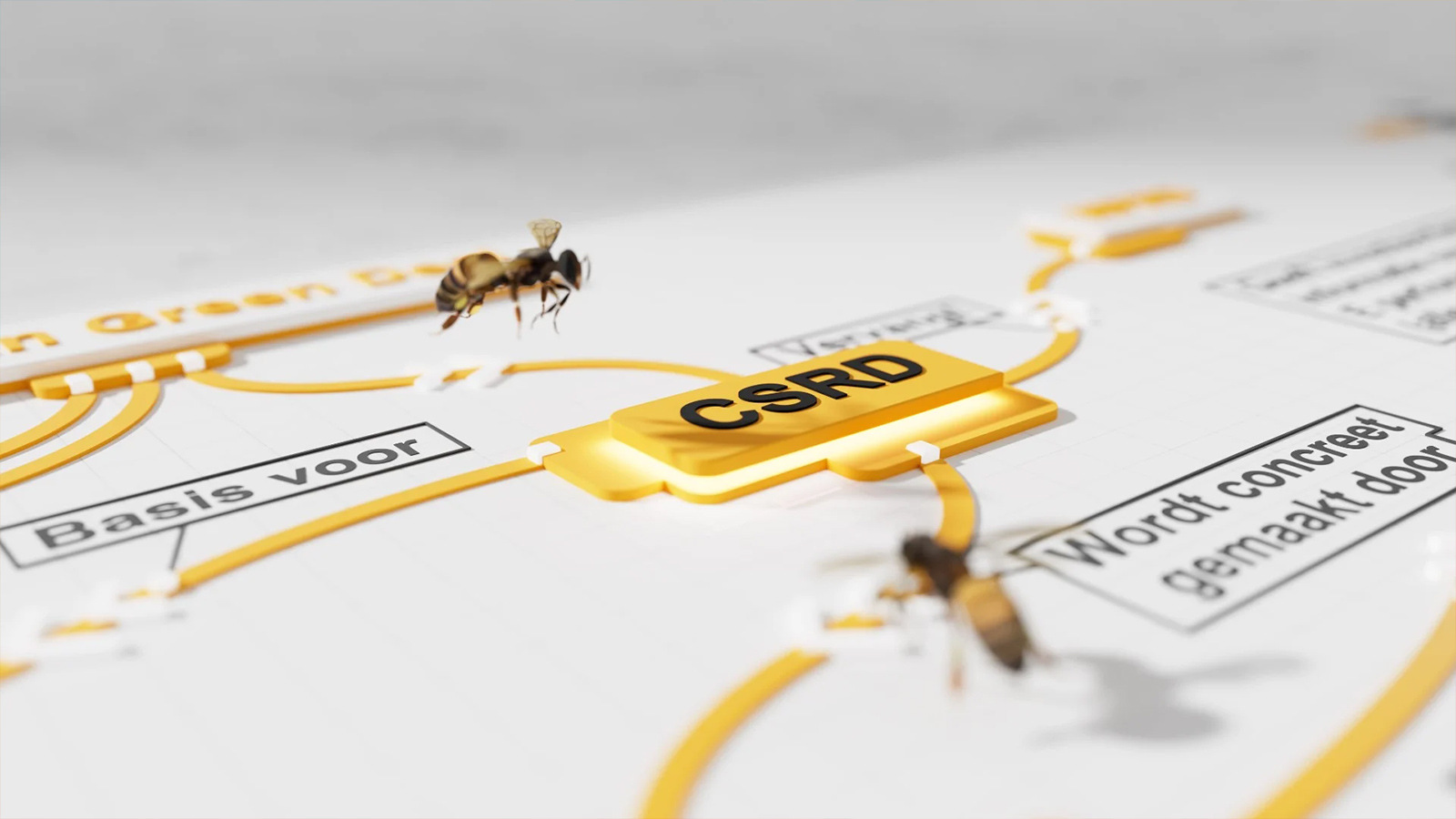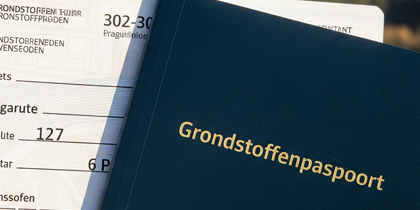How do you know what materials are incorporated in a product-and whether you can reuse or recycle them?
More and more companies want to work circularly. But if you don't know what materials a product is made of, you can't determine if-and how-you can reuse, recycle or safely process those materials. Moreover, without that information, it becomes more difficult to provide substantiated reporting on resource use-something that is becoming increasingly important in legislation such as the CSRD and UPV.
A materials passport helps with that. In this blog you'll read what it is, where to find it and more.
What is a materials passport?
A materials passport is an overview of the materials used in a product. It contains information about:
- the type of material: such as wood, steel or plastic;
- the quantity and composition: which materials are in a product and how much of each was used;
- the origin: do the materials come from primary sources such as petroleum, or have they been recycled? And which supplier did the materials come from?
- circularity: are the materials suitable for reuse, recycling or disassembly?
For example, the materials passport of an office chair states that the base is made of aluminum. The seat consists of 85% recycled plastic and is attached without glue. The armrests contain a steel interior (for extra strength), which can be removed separately from the plastic shell and recycled separately. All parts are individually replaceable or reusable.
Why is a materials passport important?
A materials passport provides insight into the materials used in a product and how they can be reused, recycled or disassembled. This prevents valuable materials from ending up unnecessarily in residual waste. Instead, they find their way back into the chain. The materials passport contributes directly to the conservation of raw materials and a circular economy.
Where can you find the materials passport?
The materials passport is not a physical document, like a passport you travel with. It is a digital overview of the materials contained in a product. In the manufacturing industry, the materials passport is often shared by the producer or supplier - for example, as a PDF, through an online database or with a QR code on the product label.
digital overview of the materials contained in a product. In the manufacturing industry, the materials passport is often shared by the producer or supplier - for example, as a PDF, through an online database or with a QR code on the product label.
Material passports are also used in the construction industry. The materials information of buildings is then digitally recorded, for example in a BIM system or via a platform such as Madaster. This provides insight into which materials - such as wood, concrete or glass - have been used, and whether they can be reused, disassembled or recycled in the future. This is relevant not only for sustainable construction, but also for future renovation, demolition or reuse of materials.
How does a materials passport help with CSRD reporting?
The CSRD Directive requires companies to report on their impact on people and the environment. An important part of this is the use of raw materials: what materials you use, whether they are primary (new) or secondary (recycled) raw materials, how much of them you use, and what happens to them afterwards. Can the materials be reused or recycled, or do they end up in the incinerator?
A materials passport maps this information. It shows per product which materials have been used, what their origin is, whether they contain harmful substances and in which waste stream they end up. This allows you as a company to report better and more clearly - exactly what is needed for the CSRD.
How does a materials passport help with UPV?
Extended Producer Responsibility (UPV) means that producers are responsible for their product even after it becomes waste. This applies, for example, to packaging, electronics, textiles and building materials. Companies must demonstrate what happens to their product after it is used and whether it is suitable for reuse, recycling or safe disposal.
A raw materials passport helps make that transparent. It records for each product what materials have been used, whether they are primary (new) or secondary (recycled) materials and whether parts are reusable, recyclable or disassembled. Thus, it not only supports UPV compliance, but also helps reduce waste and extract more value from materials.
What is the link between the materials passport and the resource transition?
The resource transition is the change from linear to circular use of materials. Instead of using materials once and then throwing them away, it's all about reuse, preserving value and preventing waste. The goal: less waste, less dependence on scarce materials and an economy where raw materials are used instead of consumed.
A materials passport helps make that change possible. It provides insight into which materials have been used and whether they are suitable for reuse, recycling or disassembly. By knowing what is in them, you can separate and recycle materials in a targeted way. This prevents valuable raw materials from being lost unnecessarily and ending up in the residual waste. Instead, they are given a new place in the chain. In this way, we move from linear use to circular use - exactly what the raw materials transition is all about.
Accelerating the resource transition as a company
How far we are with the raw materials transition is reflected in the date of Earth Overshoot Day. The later it falls, the better we manage our annual supply of natural resources. The ultimate goal? That Earth Overshoot Day doesn't occur until 31. In 2025, the day will fall as early as July 24.
Frequently asked questions about the resource passport
No, a materials passport is not currently legally required. However, in practice, it is increasingly expected — and sometimes even made a condition. For example, in circular procurement processes, clients such as municipalities often set requirements for material reuse and waste reduction.
A materials passport focuses specifically on the materials used in a product: which raw materials are used, their origin, and whether they are reusable, recyclable, or easy to disassemble.
The Digital Product Passport (DPP) goes a step further. It also includes information about the product’s use and maintenance, CO₂ impact, repairability, and relevant legislation that applies specifically to that product — such as requirements related to safety, the environment, or circularity.
The EURAL code is not a standard part of every materials passport. However, it is sometimes included — for example, when a product or material is disposed of as (potentially) hazardous waste after use, or when companies are required to register their waste streams according to the European Waste Catalogue (EURAL).
This is often the case in the construction and industrial sectors, where materials such as sealant residues, paint waste, or insulation material must be disposed of under specific EURAL codes after demolition. Including the correct code helps ensure that the waste is properly separated, registered, and processed in accordance with regulations.
The name "materials passport" refers to its purpose: ensuring that the raw materials within products are preserved.
The passport provides insight into how a material can be reused, recycled, or disassembled. This helps prevent the loss of the raw materials contained in that material. So, it’s not just about what’s inside — it’s mainly about how those components can be used again as raw materials. That’s why it’s called a materials passport.
Stay informed
Want to stay informed about the latest developments? Follow us on LinkedIn and Instagram or subscribe to our newsletter. Curious about what Milgro can do for your operations and waste management? Feel free to get in contact .

















